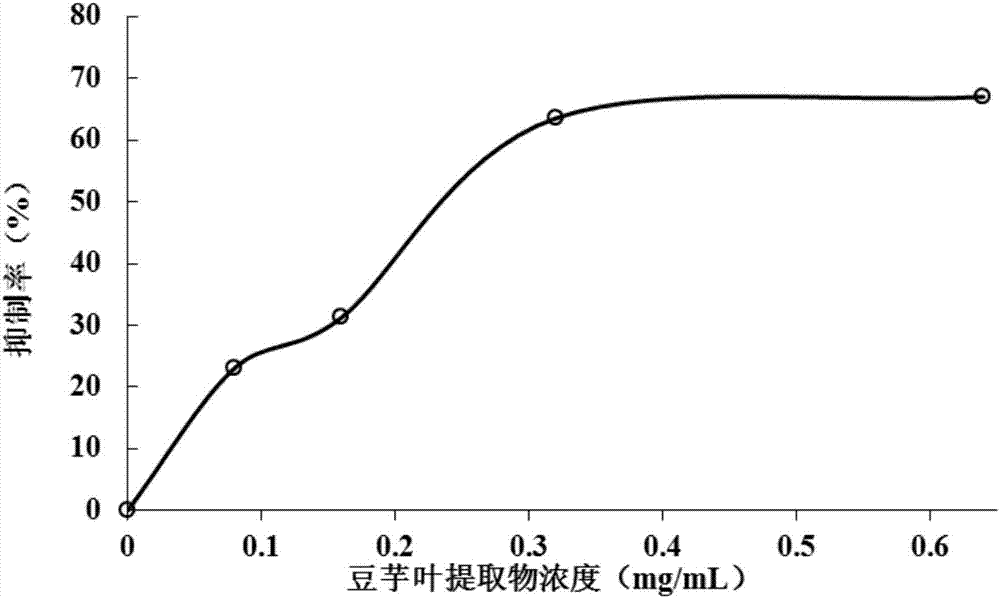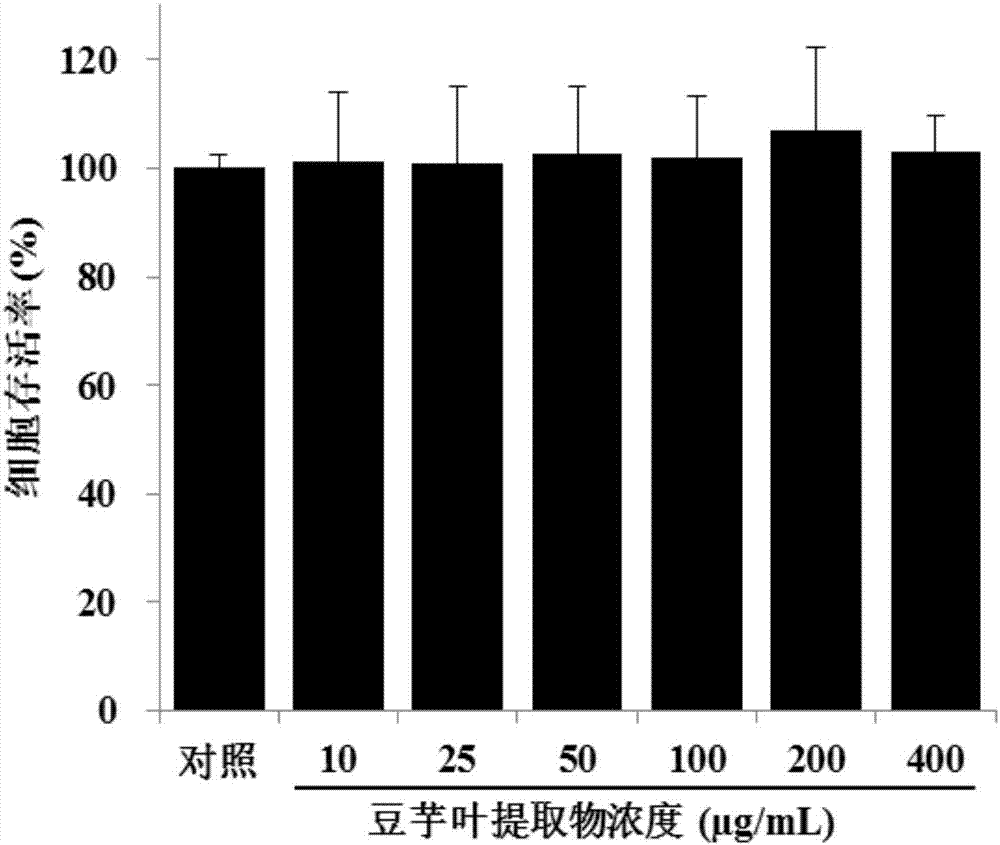Apio americana medikus leaf flavone extract, preparation method and applications thereof
The technology of leaf flavonoids and extracts is applied in the field of soybean taro leaf flavonoids extracts and preparation thereof, and can solve the problems of not finding hypoglycemic activity, failure to develop and utilize resources, waste of resources, etc. The effect of improving hypoglycemic activity
- Summary
- Abstract
- Description
- Claims
- Application Information
AI Technical Summary
Problems solved by technology
Method used
Image
Examples
Embodiment 1
[0045] A preparation method of bean taro leaf flavonoids extract, the specific steps are as follows:
[0046] (1) Get the American taro leaf, dry, pulverize, and cross a 20-mesh sieve to obtain the taro leaf powder;
[0047] (2) Get 10g of the American bean taro leaf powder obtained in step (1), add 300mL of food-grade ethanol aqueous solution with a volume fraction of 60% to it, and ultrasonically treat it at 30°C and 180W frequency for 30min; Set aside for 18h; after standing still, refrigerate and centrifuge at 4°C, 4000rpm for 30min, and collect the supernatant;
[0048] (3) Take the supernatant of step (2), concentrate under reduced pressure to 50 mL at 40°C, reclaim ethanol, and obtain a concentrated solution;
[0049] (4) The concentrated solution obtained in step (3) is placed in a macroporous resin (AB-8 macroporous resin) for separation, and is eluted with an aqueous ethanol solution with a food grade volume fraction of 60%, and the yellow liquid is collected and st...
Embodiment 2
[0062] This embodiment is except that the following content is different from embodiment 1, and all the other contents are identical to embodiment 1; specifically:
[0063] In step (2), the volume fraction of ethanol aqueous solution is changed into 55% by 60%; The frequency of ultrasonic treatment is changed into 150W by 180W, and the time is changed into 20min by 30min; for 25min.
[0064] The quality of the flavonoids extract of the obtained American beetroot leaf was 138mg.
[0065] The content of total flavonoids in the flavonoids extract of the American taro leaves prepared in this example was measured, and the result was that every 1 g of the flavonoid extracts of the American taro leaves contained 769 mg equivalent of rutin.
[0066] According to HPLC detection, the mass percentages of vitexin and schaftoside in the flavonoids extract of American bean taro leaves prepared in the example are 45% and 19%, respectively.
Embodiment 3
[0068] This embodiment is except that the following content is different from embodiment 1, and all the other contents are identical to embodiment 1; specifically:
[0069] In step (2), the volume fraction of aqueous ethanol is changed from 60% to 65%, and the volume is changed from 300mL to 250mL; the time of ultrasonic treatment is changed from 30min to 35min; in step (3), the concentrated volume is changed from 50mL to 40mL.
[0070] The quality of the flavonoids extract of the obtained American bean jelly leaf was 143mg.
[0071] The content of total flavonoids in the flavonoids extract of American bean leaf flavonoids prepared in this example was measured, and the result was: every 1 g of American bean taro leaf flavonoid extracts contained 782 mg equivalent of rutin.
[0072] As detected by HPLC, the mass percentages of vitexin and schafutasides in the flavonoid extract of American bean taro leaves prepared in the example are 44% and 20%, respectively.
PUM
 Login to View More
Login to View More Abstract
Description
Claims
Application Information
 Login to View More
Login to View More - R&D
- Intellectual Property
- Life Sciences
- Materials
- Tech Scout
- Unparalleled Data Quality
- Higher Quality Content
- 60% Fewer Hallucinations
Browse by: Latest US Patents, China's latest patents, Technical Efficacy Thesaurus, Application Domain, Technology Topic, Popular Technical Reports.
© 2025 PatSnap. All rights reserved.Legal|Privacy policy|Modern Slavery Act Transparency Statement|Sitemap|About US| Contact US: help@patsnap.com



